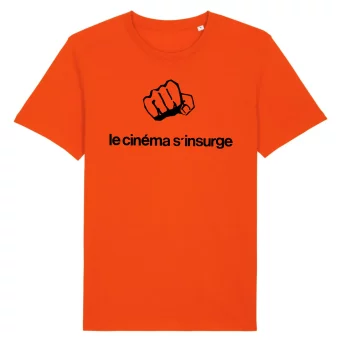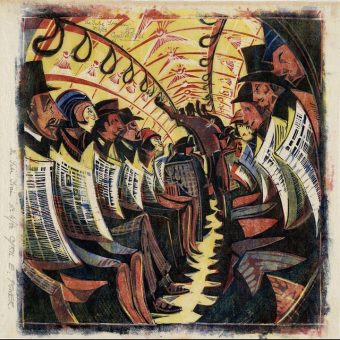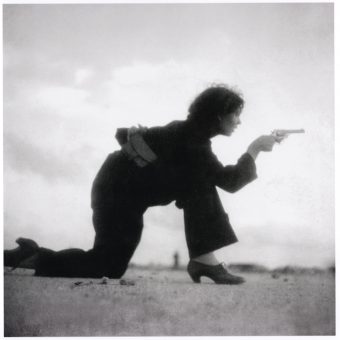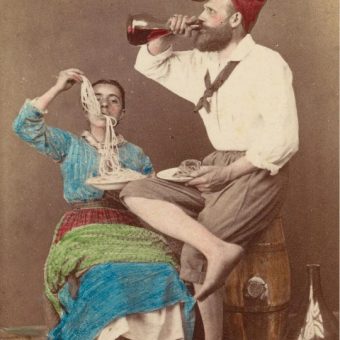“I started looking down from buildings and bridges to see how cars looked. It’s not uncommon to see the carpoolers, but I had never seen them from that perspective”
– Alejandro Cartagena, Carpoolers
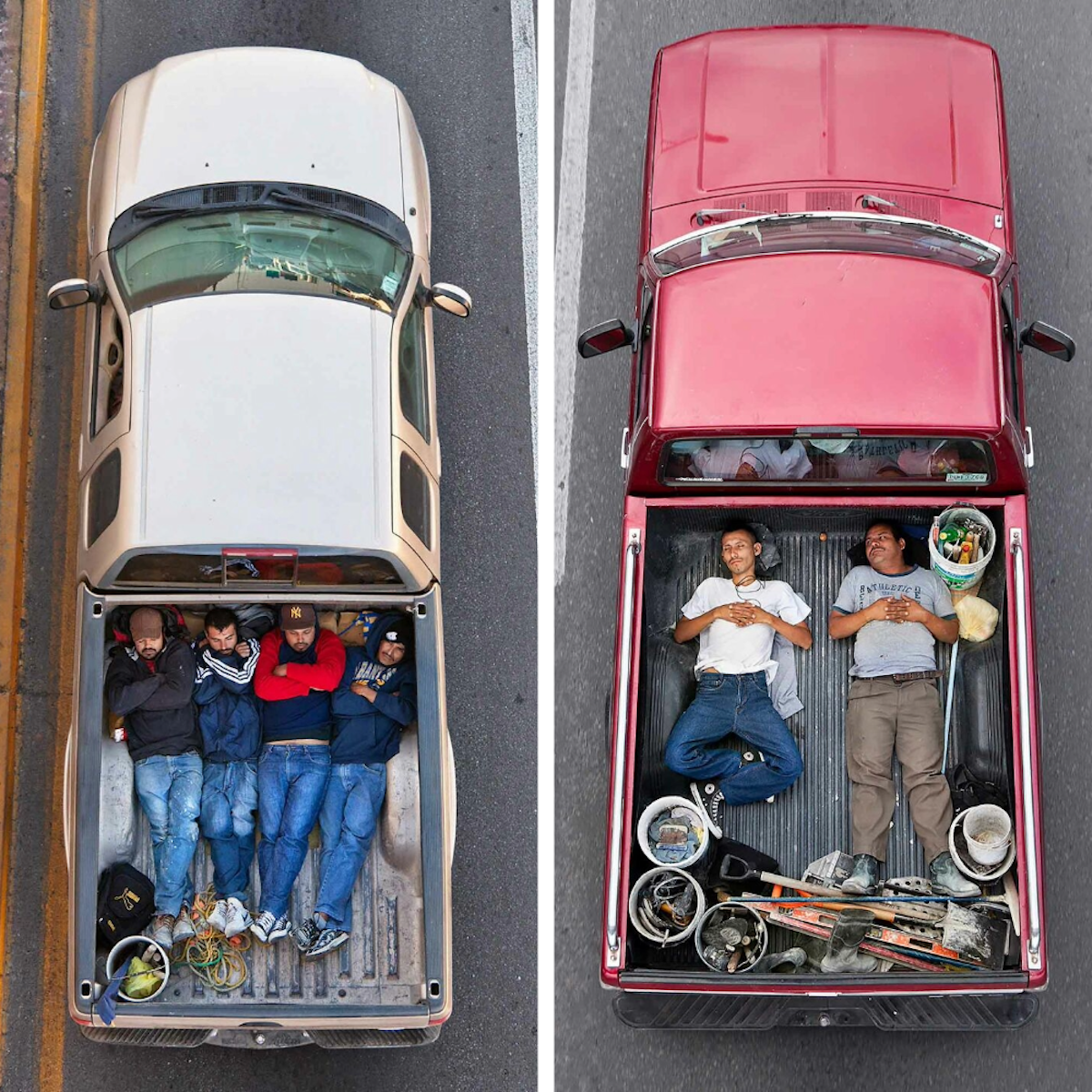
In his series Carpoolers, Mexican photographer Alejandro Cartagena shot from an overpass in Monterrey, Cartagena, recording pickup trucks during the morning rush hour. The workers laying down in the back of pick-up trucks show us lives unnoticed.
“Construction workers were buying houses an hour or more away from where they worked and there is no public transportation for them, so I started documenting how people used their cars,” says Cartagena, “how they drive to work or drive home, how they personalise their cars based on the neighbourhoods in which they lived, and I started looking down from buildings and bridges to see how cars looked. It’s not uncommon to see the carpoolers, but I had never seen them from that perspective.”
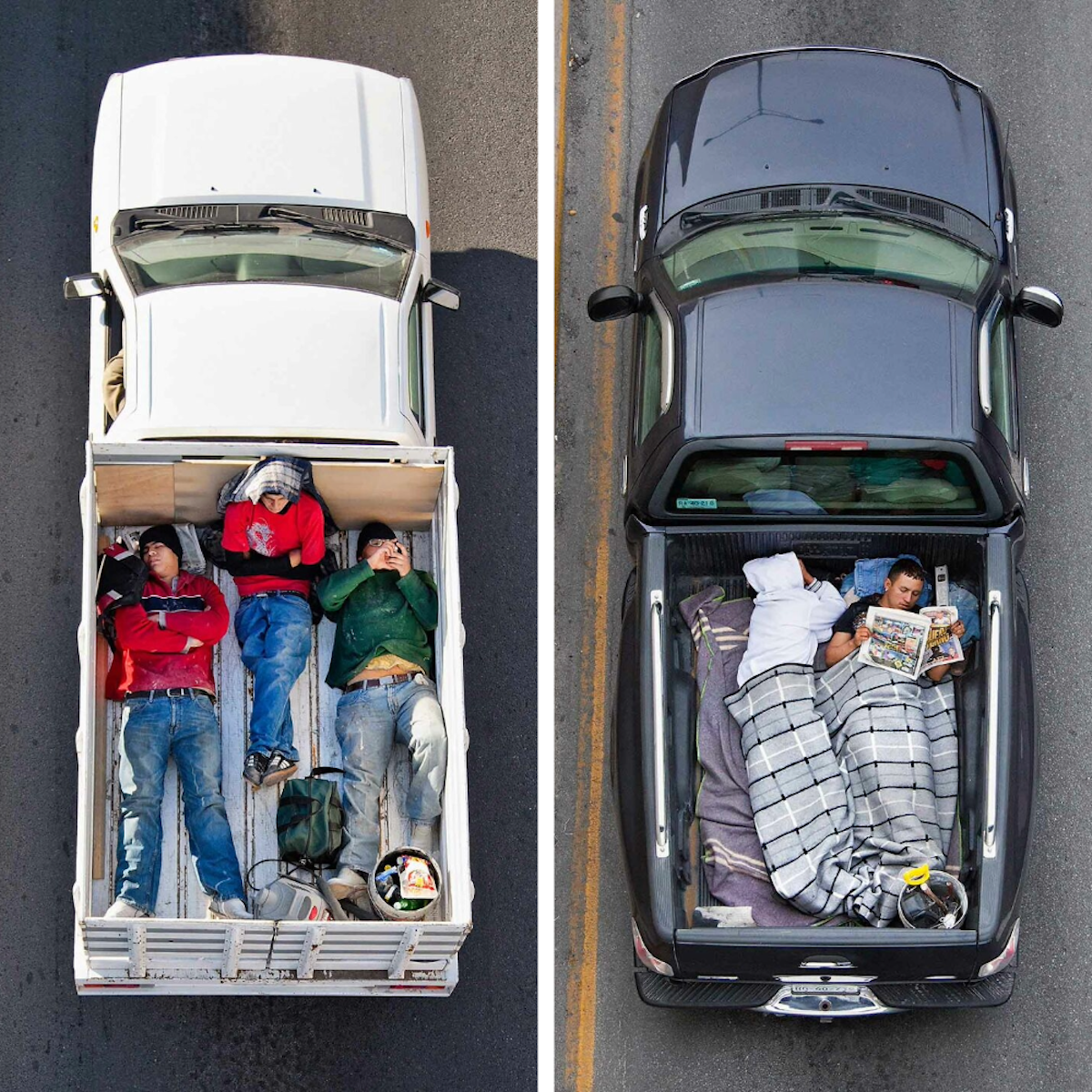
“I think there are so many interpretations because the images are so simple. There is no condemnation of what’s happening, no closed interpretations: There are people in the backs of trucks! There is a bit of humour to a social issue, a lightness where you can also wonder what is really happening. It’s also an intimate space: They’re reading papers, sleeping, chatting with friends. It’s kind of a living room on the back of a truck – things are happening in a living room, but it’s also in a public space.”
– Alejandro Cartagena, Carpoolers
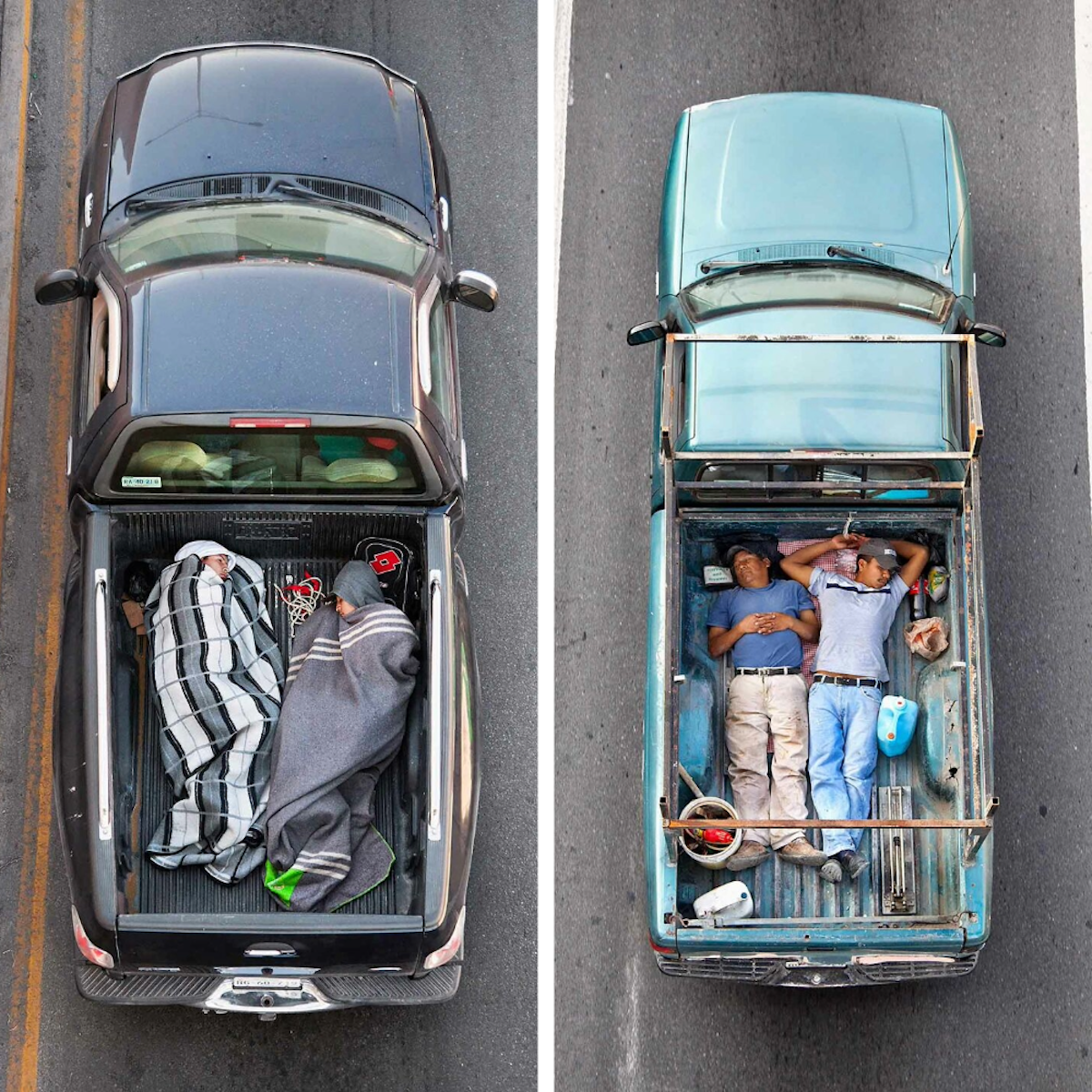
The ‘a-ha moment’ came three months after I started photographing the cars. I was commissioned to photographically respond to a series of research papers. The subject was the use of the car in metropolitan Monterrey. I rode with people, I photographed how they parked their cars, how they personalise their cars. One of the topics was traffic. We are generally not able to see traffic because we are in it. We don’t see how the landscape affects or creates traffic. So, I wanted to observe traffic from high vantage points. I was on one of those bridges looking down and began noticing all of these men in the backs of pickup trucks. I took a couple of photos and that was it. But three months later, after the commission was over, I kept thinking about them. I was skeptical if there was enough there, and I realised that I would probably have to shoot digital to make it work, although I always worked in medium and large-format analog. I was so insecure about it, I asked a former student of mine to come along.
– Alejandro Cartagena, Car Poolers (via)
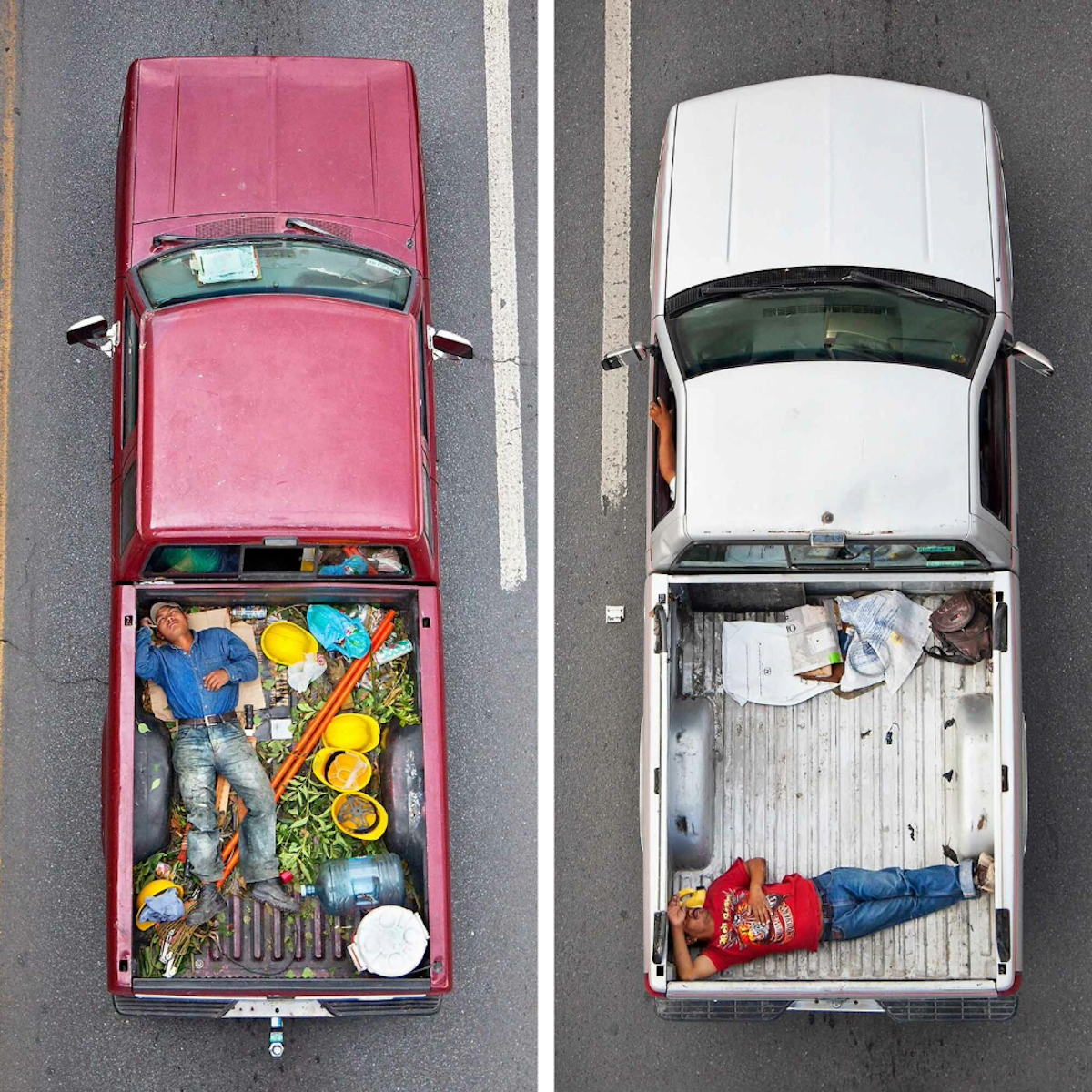
….I realised that these guys, these images, connected different aspects of my Suburbia project. They were traveling from the distant working-class neighbourhoods where they lived to work in the affluent suburbs that I had also photographed. The idea of homeownership, as witnessed by these workers going to the wealthy suburbs, was feeding the whole phenomenon. Photographing these men in the back of the trucks added another layer of complexity.
– Alejandro Cartagena, Car Poolers (via)
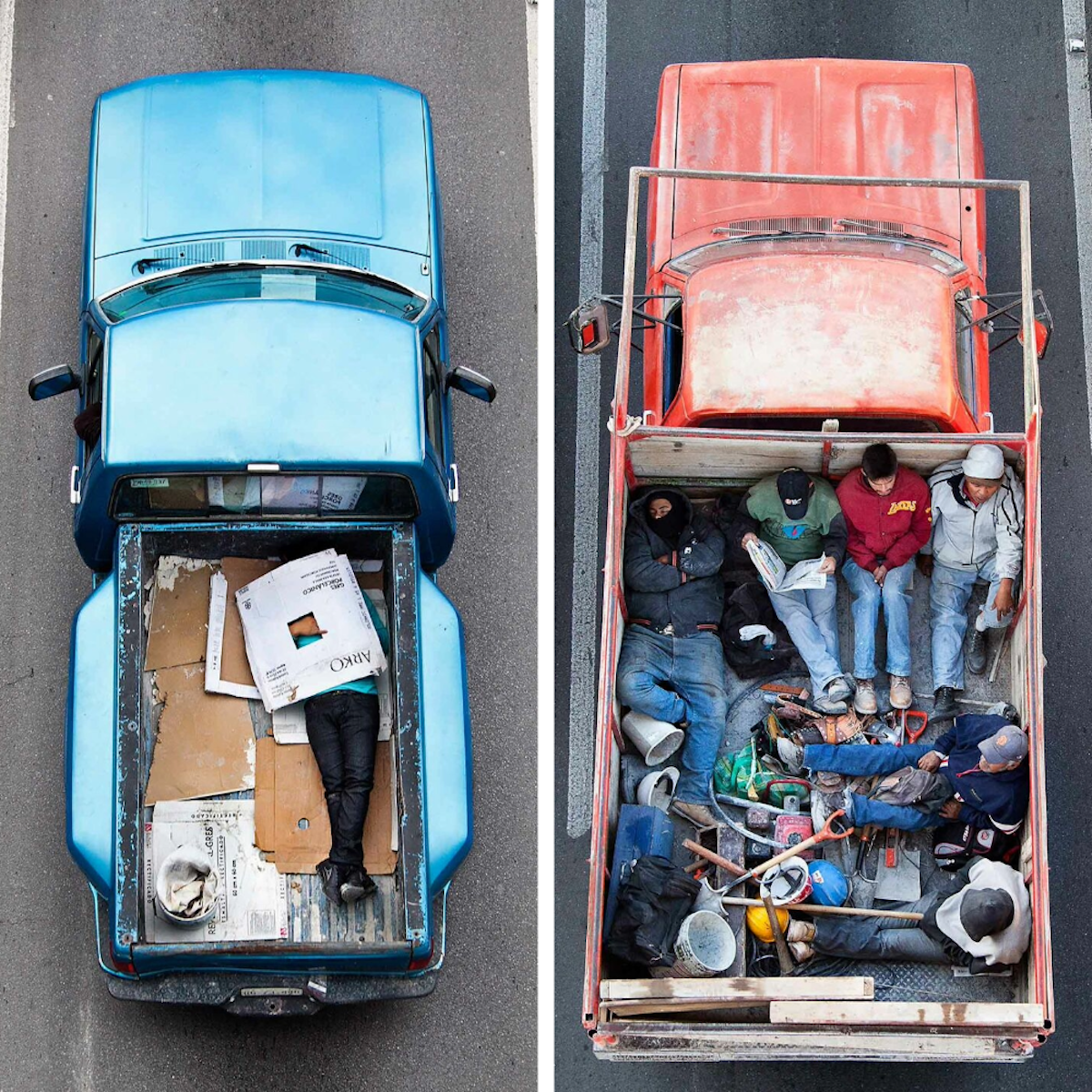
I began going to the bridge two or three times a week. I played a little game with myself, because when I shoot film I only make one exposure of an image, I would do the same with digital, which is why it took me a year to make 120 pictures! (Laughter). They are zooming by! I try to see them coming from a distance as they approach the overpass, if I see that the front seat of the truck is full, there might be guys in the back so run over the other side of the bridge and align my camera. I took around 4000 images but only 120 are any good.
– Alejandro Cartagena, Carpoolers
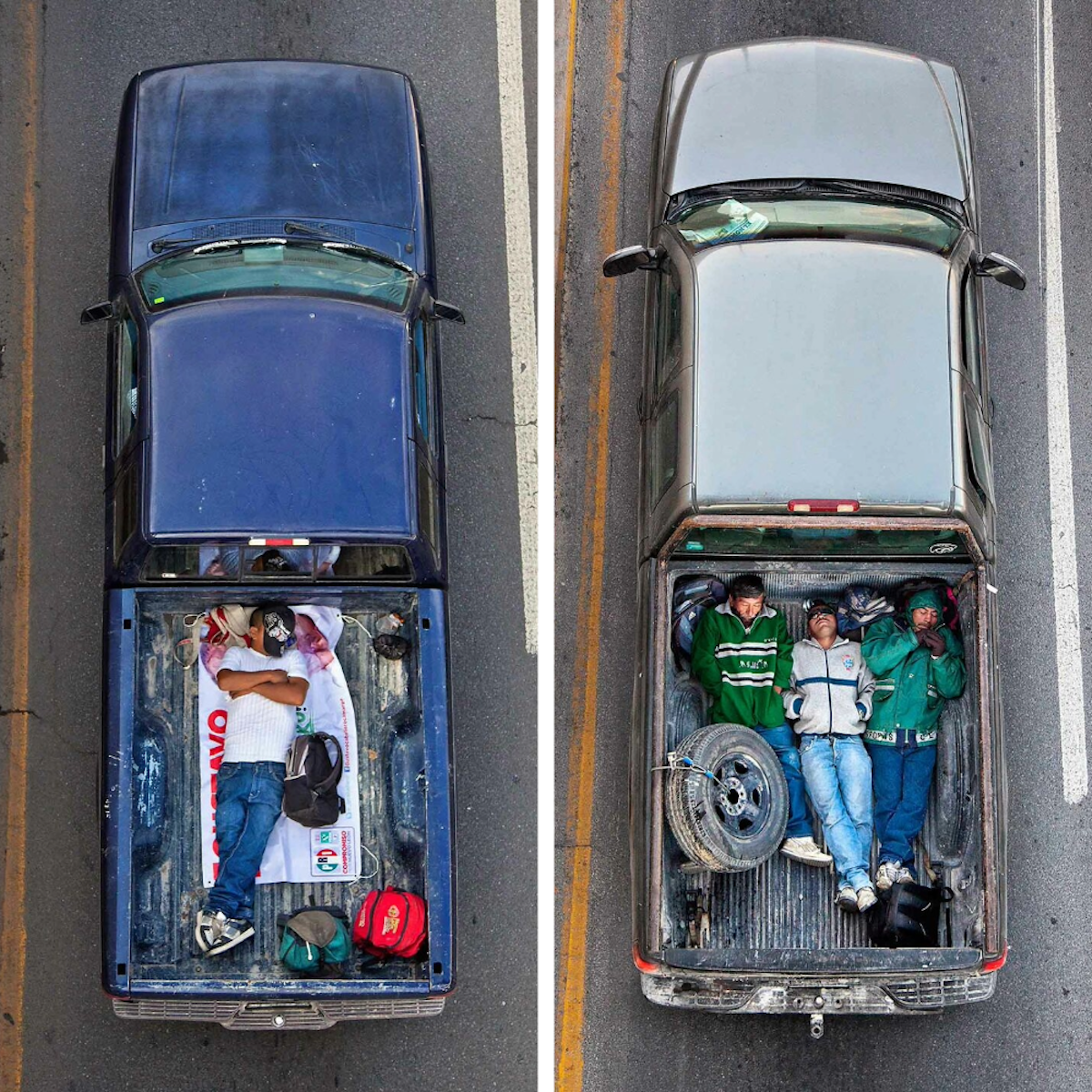
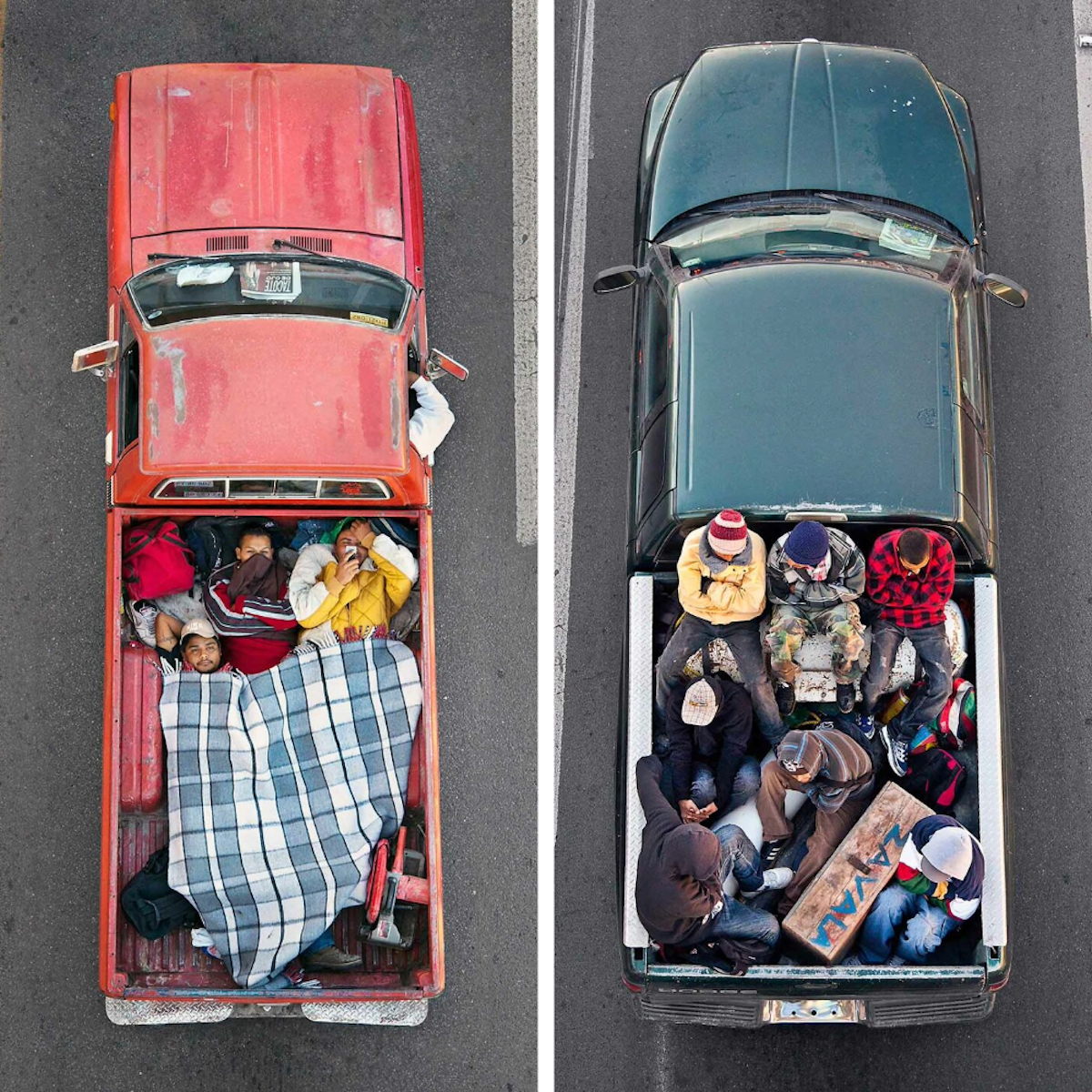
Alejandro Cartagena was born in 1977, Santo Domingo, Dominican Republic. At age 13 he and his family moved to Mexico. After taking a degree in Leisure Management, he worked in the hotel industry, restaurants, and cultural centres. “For a long time, the family photo albums of our life in the DR, were my refuge,” he says. “The photographs grounded me somehow. I think subconsciously photography became a place where I could tell stories. When I decided that I didn’t want to work in hotels and restaurants anymore, I decided I wanted to do photography. So, I began taking workshops. I volunteered at a photography center for a year doing anything they asked me to do, scanning images, sweeping floors, carrying crates. They eventually offered me a job and I worked there for five years. That’s how I learned about photography, and not just how to take pictures, but how to write proposals, how to hang exhibitions.”
Cartagena’s work has been exhibited internationally, including at the San Francisco Museum of Modern Art, where his mid-career survey, Ground Rules, is presented in 2025; George Eastman Museum, Rochester, New York; Patricia Conde Galería, Mexico City; Fondation Cartier pour l’art contemporain, Paris; and Centre de Cultura Contemporània de Barcelona. His work is in the collections of museums including the Museum of Fine Arts, Houston; J. Paul Getty Museum, Los Angeles; Portland Art Museum, Oregon; San Francisco Museum of Modern Art; George Eastman Museum; and Santa Barbara Museum of Art, California.
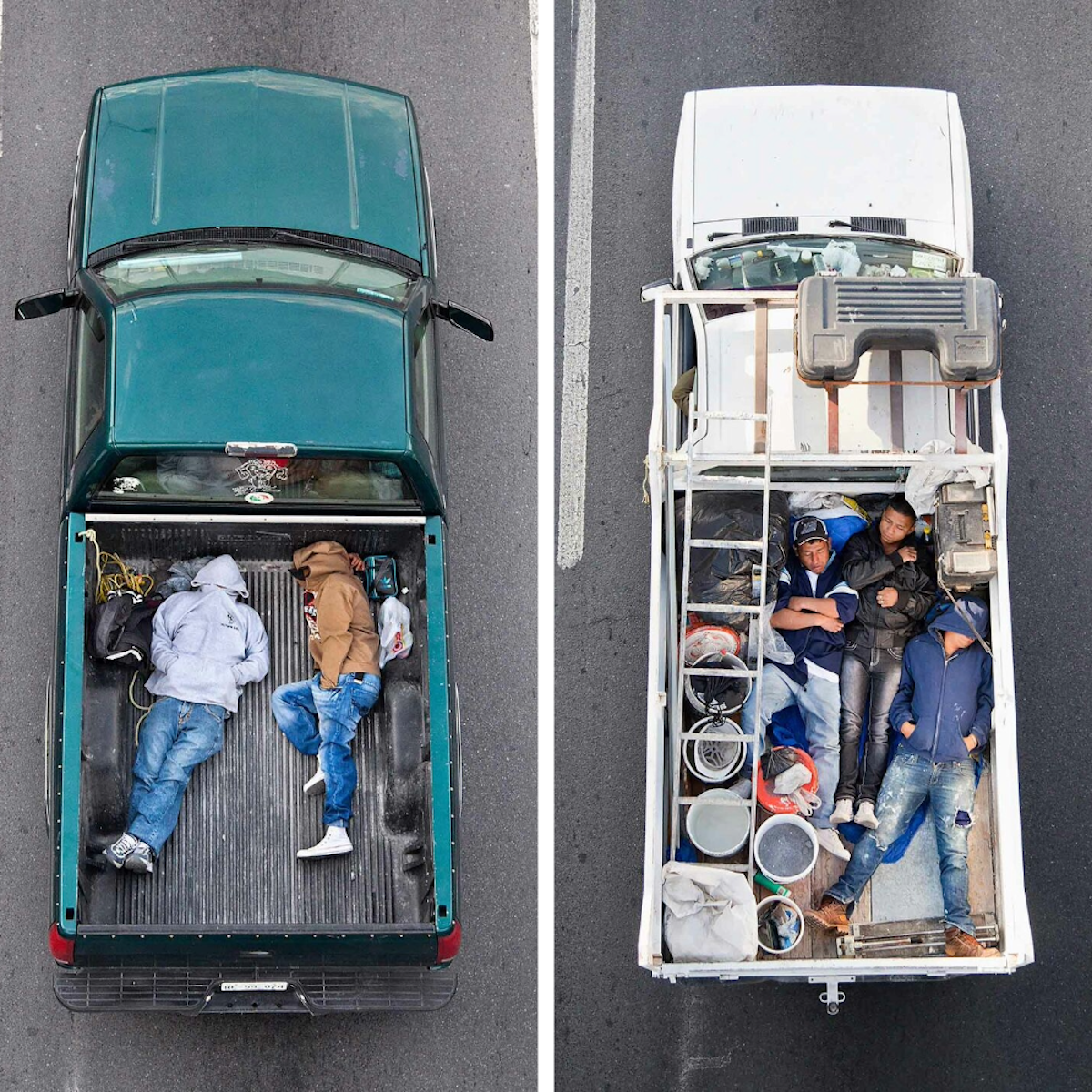

Via: Saint Lucy,
Would you like to support Flashbak?
Please consider making a donation to our site. We don't want to rely on ads to bring you the best of visual culture. You can also support us by signing up to our Mailing List. And you can also follow us on Facebook, Instagram and Twitter. For great art and culture delivered to your door, visit our shop.



